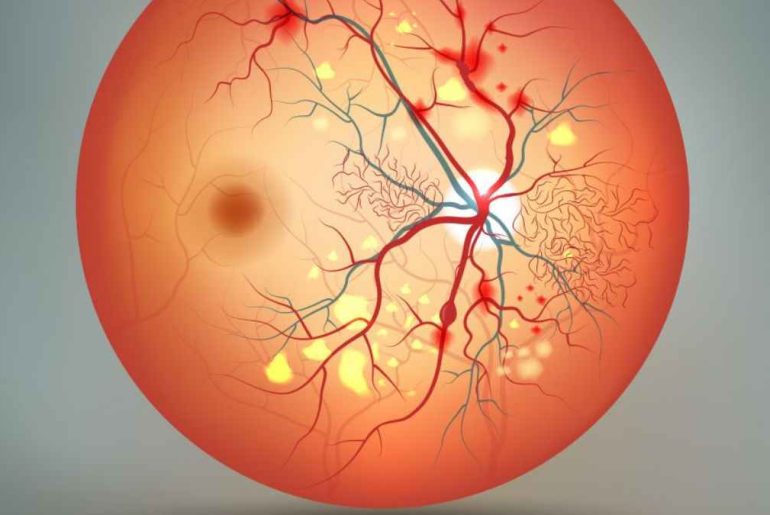The long-term consequences of Type I and Type II diabetes are not limited to the pancreas. Damage to the eyes is a common complication of diabetes. Diabetic retinopathy occurs once diabetes damages your retina’s blood vessels. The retina is the light-sensitive portion of the eye. If not corrected, diabetic retinopathy can result in blurred vision and, ultimately, blindness. Diabetic eye disease could also cause glaucoma, macular edema, or cataracts. Understanding how to identify Bronx diabetic retinopathy could help you pursue care sooner and reduce the risk of irreversible retinal damage. Continue reading to learn more.
Floating Spots
Floaters could be indicators of diabetic retinopathy, the most prevalent diabetic eye condition. Increased blood sugar could damage blood vessels, causing abnormal blood vessels to develop at the rear of your eye (the retina). The cells in your retina transmit visual impulses to your brain. The aberrant blood vessels may leak, causing blood to float within the eye. Inform your physician immediately if you notice any dark spots.
Blurred Vision
Another warning indication of diabetic retinopathy is blurred vision. Blood artery leakage can cause the fluid in the retina to become hazy. Blood can also seep into the macula, the center region of the retina. The macula works to provide a clear vision; thus, both regions of leakage could result in blurriness.
Hazy vision could also signify another diabetic eye concern known as cataracts. Although cataracts could develop in nearly everybody as they age, they are more prevalent in diabetics, even at a younger age. A cataract forces the eye’s lens behind the pupil to become clouded, whereas the lens should be transparent to direct light to the retina.
Color Variation
Color changes are another indicator of cataracts. As your lens gets foggy, it could become brown or yellow instead of transparent. You might notice a brownish tinge to your vision. You could also have difficulty distinguishing hues such as purple and blue, and some dark hues might appear black. The combination of blurring and tint might impair the clarity of vision.
Impaired Side Vision
Diabetes increases the likelihood of developing glaucoma. Glaucoma involves fluid accumulation in the anterior chamber of the eye, which causes pressure on the retina’s blood vessels, leading to the loss of peripheral vision. Serious loss of side vision is known as tunnel vision, where you only see what is immediately in front.
How To Diagnose and Treat Diabetic Neuropathy?
Diabetic eye concerns might develop gradually, and you might experience no pain. You might not notice a shift in your vision till it has already been compromised. The initial changes can only be detected by an eye doctor performing a comprehensive examination.
Therefore, you must take these exams to protect your vision. Regular examinations can reduce the risk of blindness by 95%. However, if the condition has already developed, the optometrists at Bainbridge Eye Care can suggest either laser therapy or surgical procedures, depending on the severity of your condition.
Do not risk your eyesight. If you are diabetic and identify any of these warning signs, contact Bainbridge Eye Care for a diabetic neuropathy consultation. Your optometrist will work with you to correct your eye issues and manage your diabetes. Call the Bronx, NY office or request an appointment online today.

